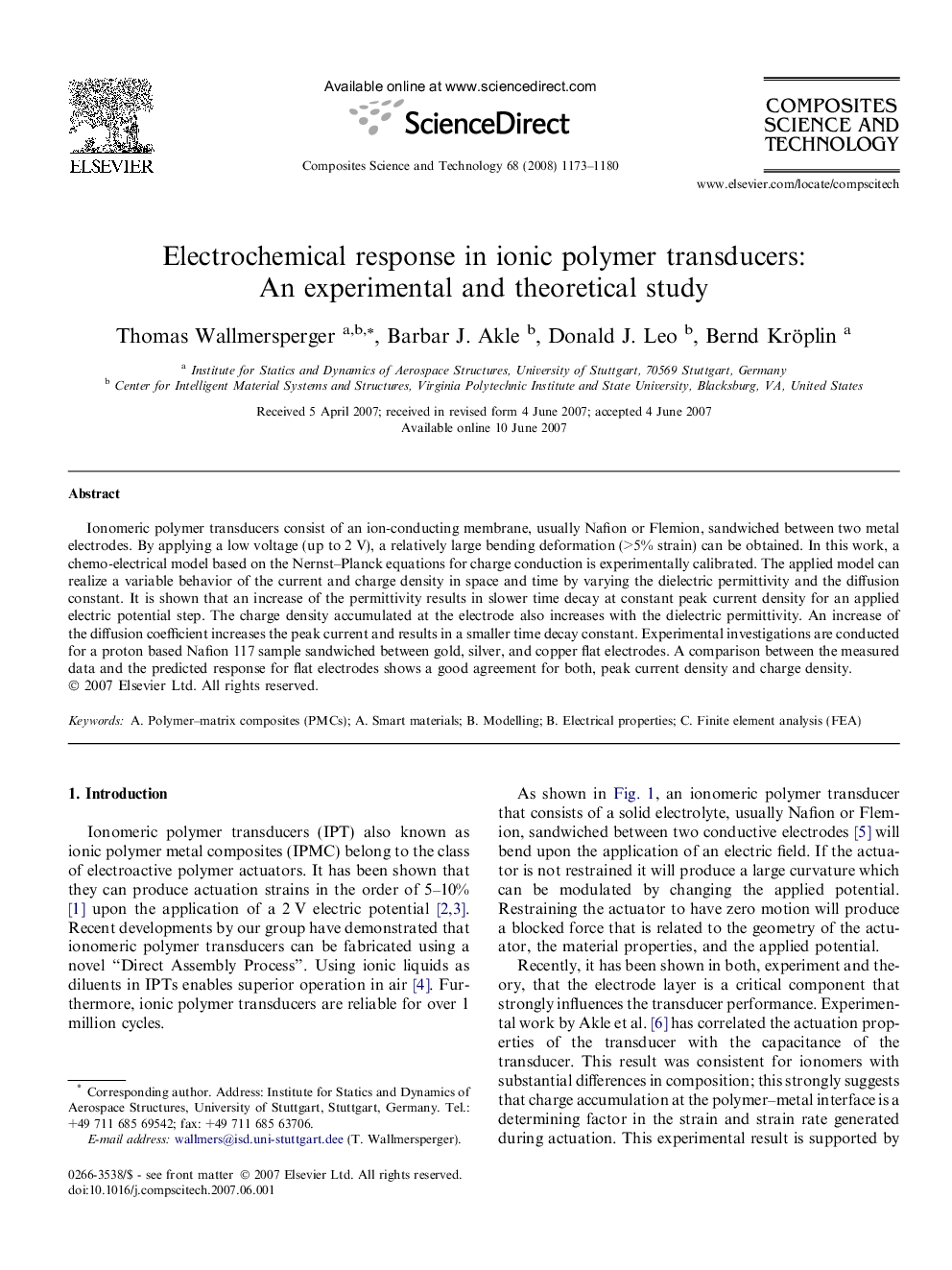| Article ID | Journal | Published Year | Pages | File Type |
|---|---|---|---|---|
| 821544 | Composites Science and Technology | 2008 | 8 Pages |
Ionomeric polymer transducers consist of an ion-conducting membrane, usually Nafion or Flemion, sandwiched between two metal electrodes. By applying a low voltage (up to 2 V), a relatively large bending deformation (>5% strain) can be obtained. In this work, a chemo-electrical model based on the Nernst–Planck equations for charge conduction is experimentally calibrated. The applied model can realize a variable behavior of the current and charge density in space and time by varying the dielectric permittivity and the diffusion constant. It is shown that an increase of the permittivity results in slower time decay at constant peak current density for an applied electric potential step. The charge density accumulated at the electrode also increases with the dielectric permittivity. An increase of the diffusion coefficient increases the peak current and results in a smaller time decay constant. Experimental investigations are conducted for a proton based Nafion 117 sample sandwiched between gold, silver, and copper flat electrodes. A comparison between the measured data and the predicted response for flat electrodes shows a good agreement for both, peak current density and charge density.
